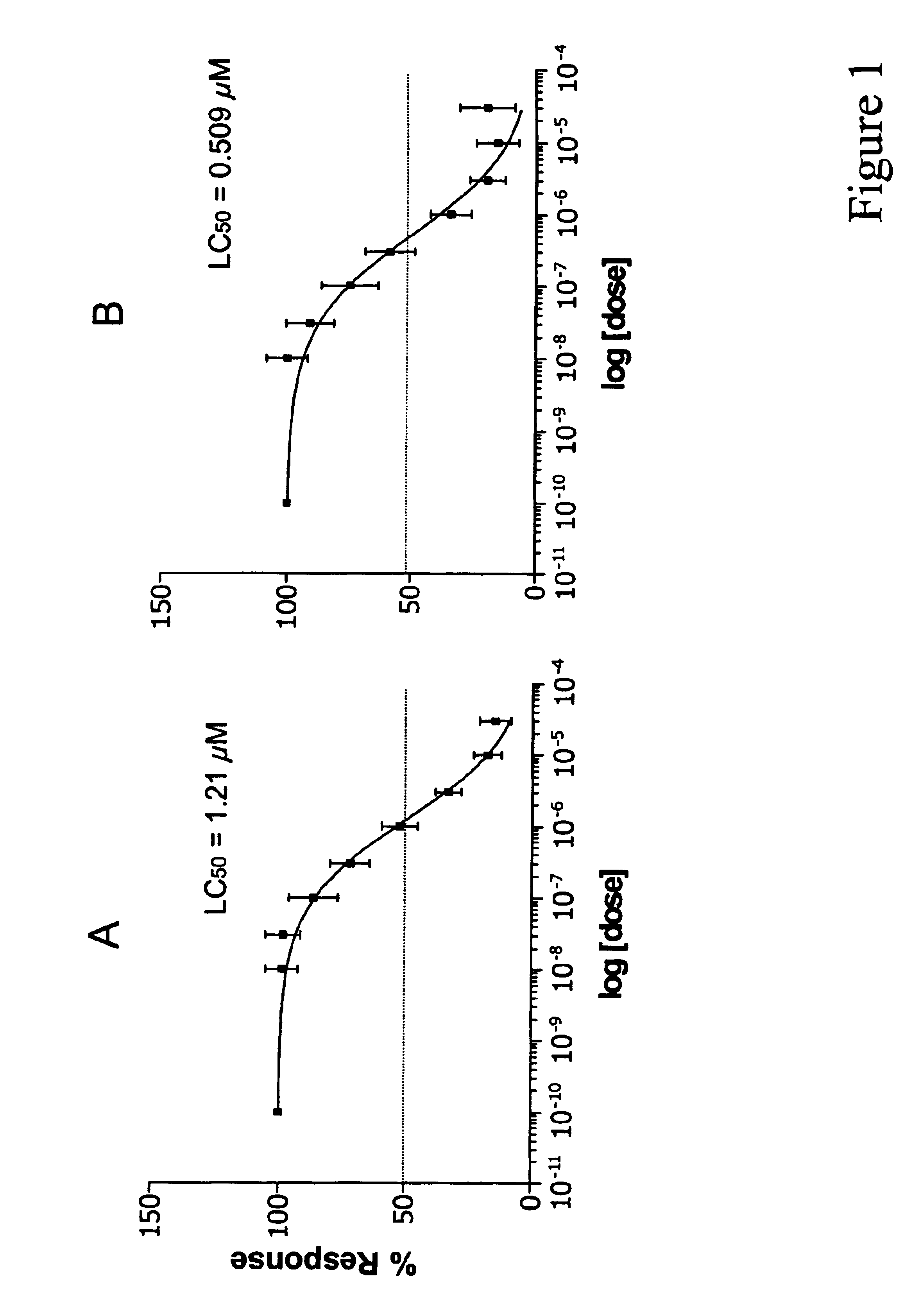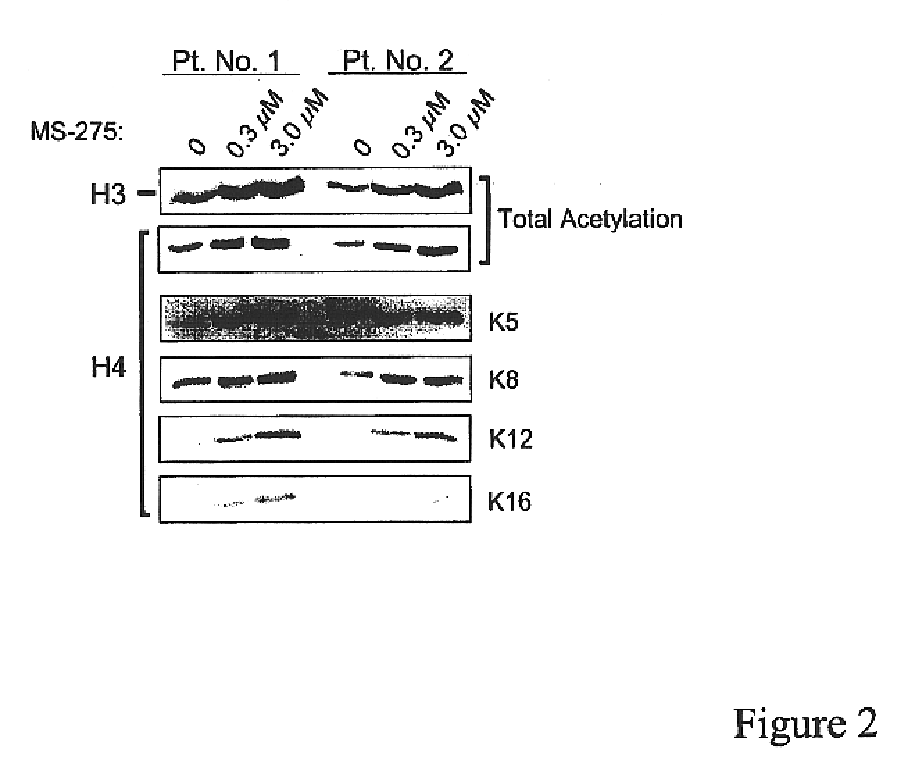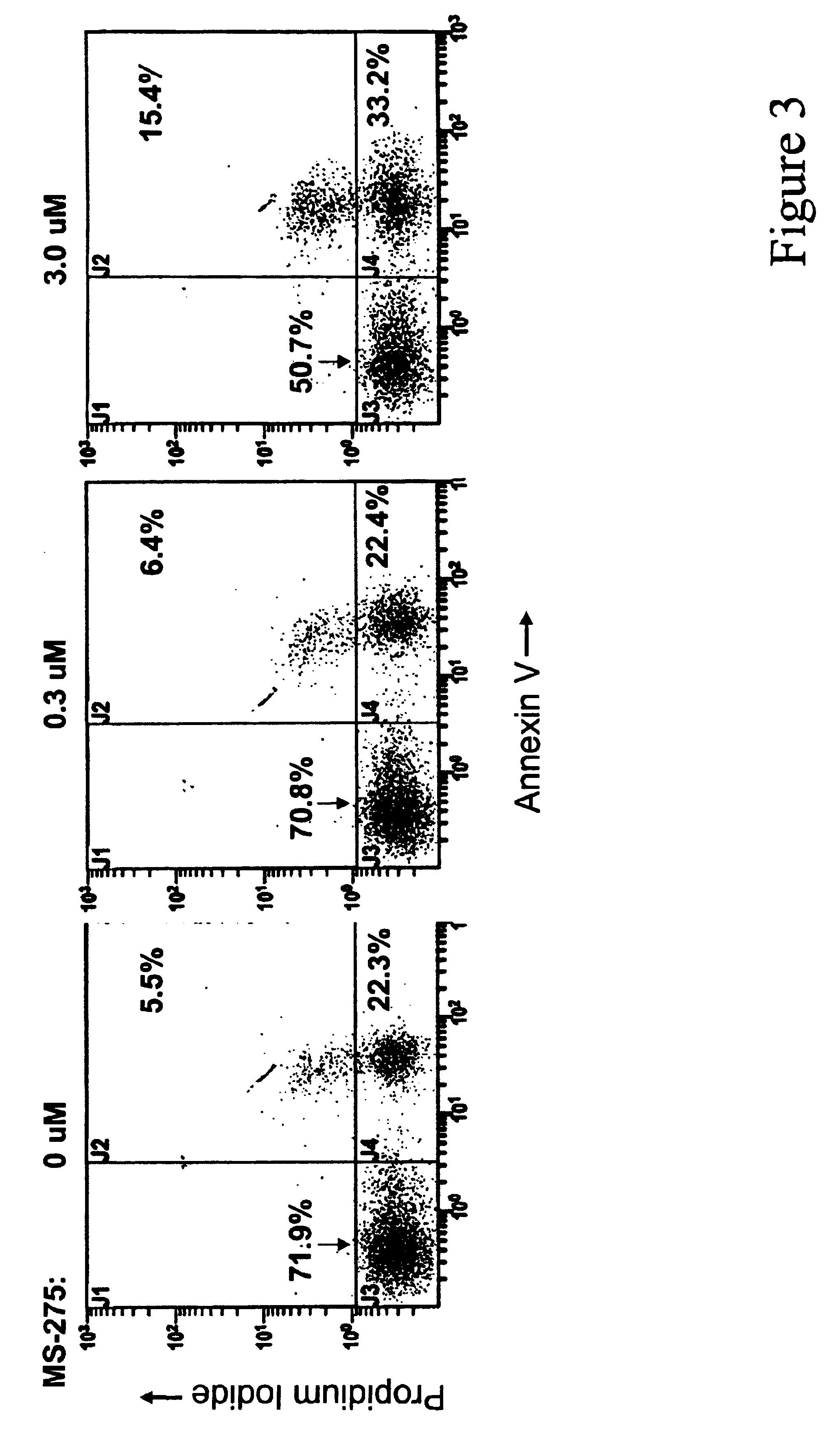Treatment of patients with chronic lymphocytic leukemia
- Summary
- Abstract
- Description
- Claims
- Application Information
AI Technical Summary
Benefits of technology
Problems solved by technology
Method used
Image
Examples
example 1
Patients and Isolation of Their Peripheral Blood Mononuclear Cells
B-CLL cells were obtained from patients previously diagnosed as having B-CLL. These patients had B-CLL as defined by B. D. Cheson et al., 1996, Blood 87:4990-7. All patients with B-CLL had been without prior therapy for B-CLL for a minimum of 2 months.
Peripheral blood mononuclear cells (PBMCs) were obtained from the B-CLL patients and were also obtained from healthy volunteers as controls. Peripheral blood was collected from the patients or volunteers using standard techniques (see for example, S. Bennett and S. N. Breit, 1994, Variables in the isolation and culture of human monocytes that are of particular relevance to studies of HIV, J. Leukoc. Biol. 56:236-40). PMBCs were isolated from the blood using standard density gradient centrifugation using Ficoll-Paque Plus (Pharmacia Biotech, Picsataway N.J.). After isolation, the PBMCs were washed in phosphate-buffered saline (PBS).
Such PBMC preparations comprised leukocy...
example 2
LC50 Determination of MS-275 for B-CLL Cells
In order to accurately represent the in vivo situation where drug is eliminated from the bloodstream, 1×106 PBMCs from B-CLL patients or healthy volunteers, isolated as described in Example 1, were incubated in various concentrations of MS-275 in RPMI 1640 with 10% heat-inactivated fetal bovine serum for 4, 24 or 96 hours at 37° C. in 96-well plates. Following incubation in MS-275, the cells were removed from media containing MS-275 and re-incubated in media without the drug. Cells that were incubated in drug for 4 hours were re-incubated in media without drug for 92 hours. Cells that were incubated in drug for 24 hours were re-incubated in media without drug for 72 hours. Cells that were incubated in drug for 96 hours were not re-incubated in media. Viability of the cells was then analyzed using the MTT assay. In this assay, cells are exposed to MTT [i.e., 3-(4,5-dimethylthiazol-2-yl)-2,5-diphenyltetrazolium bromide], which is taken into ...
example 3
MS-275 Induced Histone Acetylation in CLL Cells
To determine if MS-275 caused inhibition of histone deacetylases, B-CLL cells, isolated as described in Example 1, were incubated with 0.3 or 3.0 μM of MS-275 for 24 hours and assessed for changes in histone acetylation by immunoblotting using antibodies immunospecific for acetylated H3 or H4 histones. Antibodies immunospecific for specific acetylated lysine residues at the N terminus of histone H4 (i.e., K5, K8, K12 and K16) were also used. For immunoblotting, whole cell lysates were prepared from the cells using standard procedures. Protein samples were separated along with molecular weight markers (BioRad) on 10 to 14% SDS-polyacrylamide gels. Proteins in the gels were transferred using a semidry apparatus (BioRad) onto nitrocellulose membranes (Schleicher and Schuell, Keene, N.H.). Gel loading equivalence was confirmed by Ponceau S stain (Sigma) of membranes and by probing with a monoclonal antibody for GAPDH. Blots were developed w...
PUM
| Property | Measurement | Unit |
|---|---|---|
| Electrical conductance | aaaaa | aaaaa |
| Electrical conductance | aaaaa | aaaaa |
| Electrical conductance | aaaaa | aaaaa |
Abstract
Description
Claims
Application Information
 Login to View More
Login to View More - R&D
- Intellectual Property
- Life Sciences
- Materials
- Tech Scout
- Unparalleled Data Quality
- Higher Quality Content
- 60% Fewer Hallucinations
Browse by: Latest US Patents, China's latest patents, Technical Efficacy Thesaurus, Application Domain, Technology Topic, Popular Technical Reports.
© 2025 PatSnap. All rights reserved.Legal|Privacy policy|Modern Slavery Act Transparency Statement|Sitemap|About US| Contact US: help@patsnap.com



